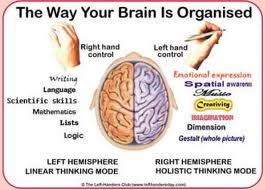Geneticist Clyde Francks, lead author of a 2007 study in which Oxford University researchers identified a genetic variant linked to left-handedness.
Hand dominance is related to brain asymmetry. Humans are asymmetric animals. Early in its embryonic development, the heart turns to the left.
The liver develops on the right. The left and right lungs have distinct structure, although there are certain rare syndromes in which the usual asymmetry organs is reversed such as dextrocadia, a heart on the right side.
When it comes to handedness, another basic human asymmetry, which reflects the structure and function of the brain, the reversed pattern is relatively common but not easily understood.
There seems to be general consensus that the human brain is profoundly asymmetric, and understanding that asymmetry, will show as much about who we are and our brains work.
For many years, handedness has been seen as a possible proxy, an external clue to the balance in the brain between left and right hemispheres.
For right-handed people, language activity is predominantly on the left side. Many left-handers also have left-side language dominance, but a significant number have language either more evenly distributed in both hemispheres or else predominantly on the right side.
Handedness runs in families. The 2007 paper by the group at Oxford identified a gene which they discovered while studying children with dyslexia, which turned out to be associated with the development of left-handedness.
The gene affects the ways neurons communicate with one another, but its mechanisms need to be studied, because left-handedness has been seen as a key to the complex anatomy of the brain.
Roughly 90 percent of the population are right-handed and 10 percent left-handed. Among the 10 percent left-handers are four recent U.S. presidents: Ford, the elder Bush, Clinton and Obama.

